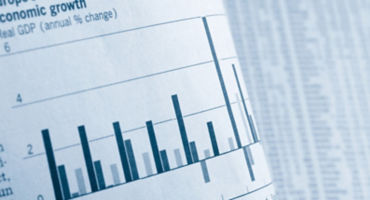Equities: Some positive signs, but keeping our guard up
We have raised our view on global equities to moderately underweight but maintain a defensive tilt. We think the lower interest-rate sensitivity of consumers and businesses, and the overall strength of the consumer, make a US hard landing less likely. However, we still believe the distribution of risks for the global economy, and even the US, is skewed to the downside. While the effects of tighter policy are playing out with more of a lag than in the past, there will eventually be a monetary overhang, which implies lower equity valuations and downgrades in earnings expectations.
We think the fiscal impulse that has propped up the private sector will in time become a drag on growth in the US and Europe as they consolidate fiscally — although the impact may be less noticeable in Europe, where fiscal stimulus has not been fully deployed on the ground. We also expect higher inflation risk globally as the path to further disinflation becomes more fraught. A worsening growth/inflation mix will chip away at margins. Meanwhile, global equity valuations are still expensive, in absolute terms and relative to cash. We observe more regional divergence, with the US and Japan outperforming Europe cyclically, and valuations similarly disparate.
We maintain our overweight view on Japanese equities. While the market is no longer cheap, positive economic momentum has fed through to higher margins and earnings growth. The Bank of Japan (BOJ) decision to add flexibility to its yield curve control policy in July has not challenged the market’s outperformance, partly because the yen has continued to weaken against the US dollar. In addition, Japanese equities continue to show good market breadth.
We have an underweight view on US and European equities relative to Japan. We upgraded our US market view slightly, taking into account the resilience of the economy and companies’ exposure to AI trends. But US valuations seem priced for perfection, making them vulnerable to a downgrade in growth expectations sparked by the resumption of student loan repayments, auto worker strikes, or any number of other catalysts. Corporate balance sheets still look solid, although we see some signs of weakening in net margins and interest coverage.
European valuations are attractive and we have more conviction that the European Central Bank has reached the end of its hiking path as the economy has cooled. However, weak earnings momentum and downward adjustments in profitability — in what we believe to be a stagflationary base case — leave us downbeat on equity market prospects. We also see cracks emerging in the service sector, a negative sign for the labor market and consumer resilience.
We have downgraded our China view to neutral, as we have been too optimistic on the potential for a cyclical uplift as well as on structural issues holding back sentiment and investors’ willingness to engage. We are tracking a raft of recent policy measures and signs of cyclical green shoots suggesting we may be at peak pessimism, but also note that there are fewer signs of a turnaround in consumer sentiment or the property cycle. The case for emerging markets (EM) ex-China is also finely balanced, with domestic monetary policy easing juxtaposed against a strong US dollar and inflation risks from food and oil.
Regarding sectors, we are positive on financials and negative on materials. We expect financials to be supported by strong corporate fundamentals as well as continued positive sentiment, while we expect the materials sector to struggle given weaker return on equity and higher return volatility.















Japan equity: Reason to believe
Continue readingBy
Toshiki Izumi, CFA, CMA